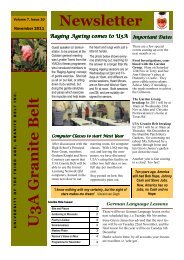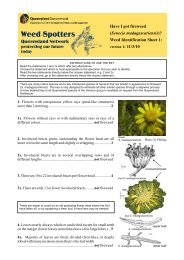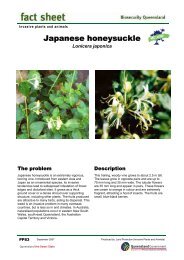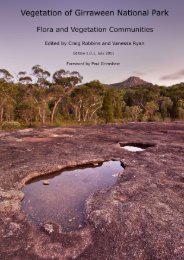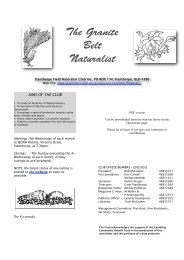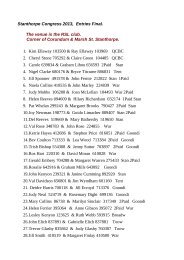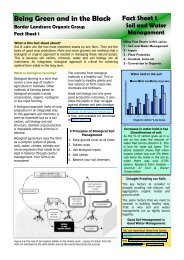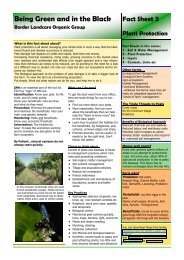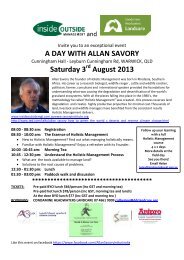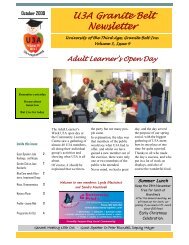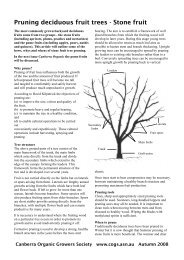Introductory weed management manual - Greening Australia
Introductory weed management manual - Greening Australia
Introductory weed management manual - Greening Australia
Create successful ePaper yourself
Turn your PDF publications into a flip-book with our unique Google optimized e-Paper software.
Introduction<br />
It is essential to identify plants correctly to ensure that you are dealing with the <strong>weed</strong> that you think you are and that<br />
the right control plan is developed. Some species are well known while others can be very difficult to identify and may<br />
be confused with plants that are not <strong>weed</strong>s, or even species that are rare or endangered. The Weed of National<br />
Significance Chilean needle grass (Nassella neesiana), for example, can be very difficult to differentiate from other<br />
tussock forming grasses including native Austrostipa species. The Alert List species Asystasia gangetica ssp. micrantha<br />
can also be difficult to separate from native Asystasia species. In cases like these, or where you have any doubt at<br />
all over the identity of a plant that you think may be a <strong>weed</strong>, it is essential to get it correctly identified. This module<br />
explains how to prepare plant specimens for presentation to botanists, state herbaria or other experts who can<br />
correctly identify the plant for you.<br />
Introduction<br />
Collecting and preparing plant specimens for identification<br />
The key to accurate identification of plants is to supply the agronomist or botanist with good quality specimens and<br />
sufficient information about the plant, including the conditions in which it was collected. This can be helped by photos<br />
of the plant in its habitat.<br />
Inadequate or poorly preserved and presented specimens will often not be accepted for identification. Always<br />
collect several sets of the same specimen so that you can keep a specimen for your later reference following correct<br />
identification. Specimens sent to a herbarium for identification won’t be returned and may be kept for herbaria<br />
reference collections.<br />
Materials required for successful plant collecting<br />
• a mattock or spade to ease plant specimens from the soil, leaving the roots and other underground organs intact.<br />
Never pull plants from the soil.<br />
• secateurs and/or small saw for removing small branches from trees and shrubs<br />
• plastic bags, rubber bands and “Esky” if weather is hot OR non-gloss newspaper and a portable plant press<br />
• pencil or permanent marker, jewellers tags to tie to individual specimens<br />
• notebook for recording details<br />
• camera for recording plants in position in their habitat before you collect them<br />
• a GPS unit is the best way to accurately determine the location of the specimen you are collecting. If this is not<br />
available then a topographic map may be used, see Appendix 3 of Module 1, Establishing your location.<br />
Collection details<br />
Supplying sufficient information about the size and habitat of the plant will help in identification.<br />
Completing the attached template will give sufficient details.<br />
What to collect<br />
Many plants have similar features and it is not possible to identify them from leaves alone. Therefore, it is important<br />
to supply different parts of the plant for correct identification, particularly flowering parts and seedpods. Identification<br />
of perennial species will often require underground parts such as roots, tubers, underground stems (rhizomes) or corms.<br />
Include a sample of bark if present.<br />
For plants with separate male and female flowers collect both sets of flowers. Record flower colour, as this may change<br />
when the specimens are dried.<br />
CRC for <strong>Australia</strong>n Weed Management • Collecting and preparing plant specimens for identification<br />
3



